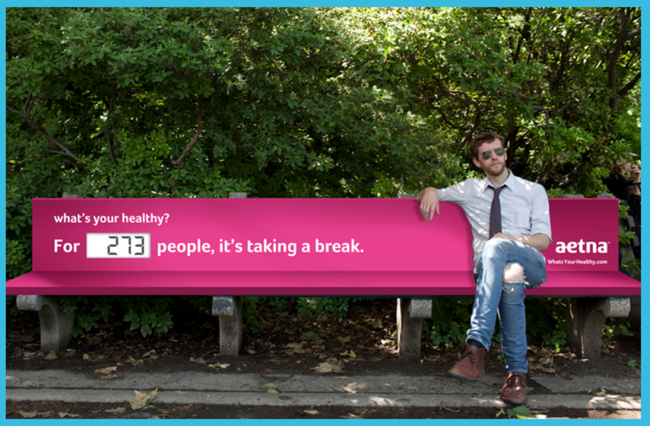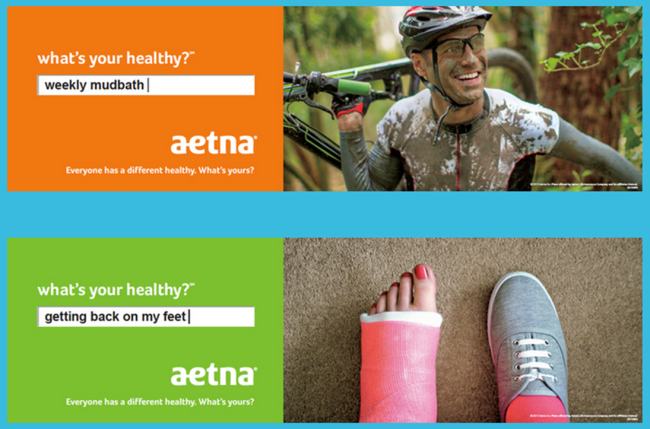When I was in architecture school, Michael Graves was one of those architects that we studied. Everyone wanted to be like him designing cool building like this one below. Since then, he’s gone on to be even more famous both from an architecture perspective and a design perspective (even having his own Target line).

But, since he was left paralyzed from the chest down in 2003, he’s had an incredible focus on redesigning healthcare from the perspective of the patient. [I would put him in a similar e-patient category as e-Patient Dave, but while Dave is focused on technology and data, Michael is focused on furniture and spatial experience.)
I was thrilled to get the chance to talk with him yesterday to see how this effort was taking off, and on a personal note, to see if this idea of architecture influencing outcomes would be generally accepted. My general takeaway after talking with him was that he’s getting a very positive response as he talks to people about it, but you’re not seeing a sea-change in terms of clients focusing on this or his fellow architects embracing this. But, as someone in healthcare, this isn’t surprising. We know it takes physicians 17 years to adopt new standards…why should it take the administrators of those physicians any less.
At the same time, there is a huge focus on the patient experience and on outcomes these days. Both of those can be improved through a focus on the physical experience. I asked him whether he was seeing interest from both inpatient and outpatient facilities. He indicated that the dialogue is all happening around hospitals which isn’t surprising given their investments in new facilities and the industry shift around ACOs and PCMHs. But, any of us that have sat in a physician’s office looking at posters from the drug companies, outdated magazines, or just an overly sterile room, know that these things don’t relax you or make you comfortable.
Michael tells a story that I’d seen in other articles about how he first came to understand all the problems with the physical space in the hospital. He wanted to shave one day and realized that he couldn’t see himself in the mirror and he couldn’t reach the water to turn it on. It was all designed by someone that hadn’t put themselves in the patient’s shoes (or wheelchair) to understand their perspective on the space.
Since “evidence-based medicine” is all the buzz in the healthcare area, I asked him about the term “evidence-based design” which is used in several articles and on his website. As he pointed out, it’s basically about just using common sense, but I do think there’s more there (to eventually sell this). To me, this implies a level of rigor linking more practical furniture and spatial redesign to clinical outcomes and patient satisfaction. These are the things that are going to motivate the CFO to open the purse strings to make a change. Unfortunately in our healthcare system, there aren’t a lot of changes made just because the patient wants them or they make sense. Otherwise, we’d have a healthcare system not a sick care system.
The final topic we discussed was moving beyond furniture to look at art and color and other things that could effect the patient’s experience. He told me that he’s also a painter (which I didn’t know) and mentioned that one of his clients had bought some of his art and furniture for their facility. He also reinforced a study that I’d seen before about not using abstract art but focusing more on natural scenes within the patient setting (also mentioned below).
Here’s a few articles from other interviews and a link to the work he’s doing with Stryker on medical equipment / furniture. You can also see a press release on his upcoming presentation at the end of this post.
And, while Michael is focused on the furniture and spatial experience, there are others focused on the art, colors, and other aspects of the hospital experience. I found this text from The Atlantic from a few years back that even talks about some of the studies that have been done. [Maybe case managers should be asking for specific rooms in facilities!]
Such “evidence-based design,” which draws its principles from controlled studies, is the great hope of professionals who want to upgrade the look and feel of medical centers. Much of this research follows a seminal 1984 Science article by Roger S. Ulrich, now at the Center for Health Systems and Design at Texas A&M. He looked at patients recovering from gallbladder surgery in a hospital that had some rooms overlooking a grove of trees and identical rooms facing a brick wall. The patients were matched to control for characteristics, such as age or obesity, that might influence their recovery. The results were striking. Patients with a view of the trees had shorter hospital stays (7.96 days versus 8.70 days) and required significantly less high-powered, expensive pain medication.
Along similar lines, a 2005 study compared patients recovering from elective spinal surgery whose rooms were on the sunny side of a ward with those on the dimmer side. Those in the sunnier rooms rated their stress and pain lower and took 22 percent less pain medication each hour, incurring only 80 percent of the pain-medication costs of the patients in gloomier rooms. Other studies, with subjects ranging from the severely burned to cancer patients to those receiving painful bronchoscopies, have found that looking at nature images significantly reduces anxiety and increases pain tolerance. Not all distractions are good, however. Ulrich and others have found that inescapable TV broadcasts and “chaotic abstract art” can increase patients’ stress.
Press release about his upcoming presentation:
World-Renown Architect Becomes Healthcare Advocate After Rare Illness Leaves Him Paralyzed
Michael Graves to speak at medical conference about his passion for healthcare design
Michael Graves, the award-winning architect and product designer famous for his collection of home products sold at Target, will address the country’s top healthcare professionals during a special reception at the 2012 Health Forum and the American Hospital Association Leadership Summit next month. He will give a personal account about how paralysis fueled his desire to improve healthcare design.
Graves, who was recently named the 2012 recipient of the Richard H. Driehaus Prize and applies his design philosophy to designing better hospitals and home care environments, will be the featured speaker immediately following the welcome reception of the 2012 AHA Summit, at the San Francisco Marriott Marquis, at 7 p.m., Thursday, July 19.
In his lecture, “People First: Redesigning the Hospital Room,” Graves will discuss his own experience with a sinus infection that left him paralyzed from the chest down and how undergoing hospitalization and rehabilitation in inadequately designed hospital rooms has inspired his healthcare designs.
Graves talk will focus on design solutions for Stryker Medical, including a collection of hospital patient room furniture that addresses common hospital problems such as infection control, patient falls and clinician back.
“We are thrilled to have such a highly-acclaimed and gifted architect speaking before the healthcare community about ways of improving the hospital setting,” said Harold Michels, senior vice president of the Copper Development Association (CDA), the organization hosting the dinner event with Graves. “This is a can’t-miss event that will certainly have hospital CEO’s and healthcare advocates talking about way after it’s over.”
Graves has said that spending months in hospitals during his recovery in 2003 opened his eyes to poorly designed patient rooms, and made him realize the patient experience could be improved by design. He immediately began to sketch ideas for improving hospital buildings, room and furniture.
The event is being presented by CDA’s Antimicrobial Copper team, which is working to advance the message that copper surfaces intrinsically kill disease-causing bacteria. On display will be a variety of antimicrobial copper products, which can play a pivotal role in healthcare facilities by killing bacteria that cause hospital-acquired infections and by reducing costs.
Laboratory testing has demonstrated that antimicrobial copper surfaces kill more than 99.9% of the following HAI causing bacteria within 2 hours of exposure: MRSA, VRE, Staphylococcus aureus, Enterobacter aerogenes, Pseudomonas aeruginosa, and E. coli O157:H7.
Graves is internationally recognized as a healthcare design advocate, and in 2010, the Center for Health Design named Michael Graves one of the Top 25 Most Influential People in Healthcare Design. Graves regularly gives lectures to major healthcare advocacy groups, including AARP, the Healthcare Design Conference, Medicine X and TED MED.
About Michael Graves & Associates
Michael Graves & Associates has been in the forefront of architecture and design since AIA Gold Medalist Michael Graves founded his practice in 1964. Today, the practice comprises two firms run by eight principals. Michael Graves & Associates (MGA) provides planning, architecture and interior design services, and Michael Graves Design Group (MGDG) specializes in product design, graphics and branding. MGA has designed many master plans and the architecture and interiors of over 350 buildings worldwide, including hotels and resorts, restaurants, retail stores, civic and cultural projects, office buildings, healthcare, residences and a wide variety of academic facilities. MGDG has designed and brought to market over 2,000 products for clients such as JC Penney, Target, Alessi, Stryker and Disney. Graves and the firms have received over 200 awards for design excellence. With a unique, highly integrated multidisciplinary practice, the Michael Graves Companies offer strategic advantages to clients worldwide. For more information, visit www.michaelgraves.com.
About the Copper Development Association
The Copper Development Association Inc. is the market development, engineering and information services arm of the copper industry, chartered to enhance and expand markets for copper and its alloys in North America. Learn more on ourblog. Follow us on Twitter.

 September 11, 2023
September 11, 2023 







































